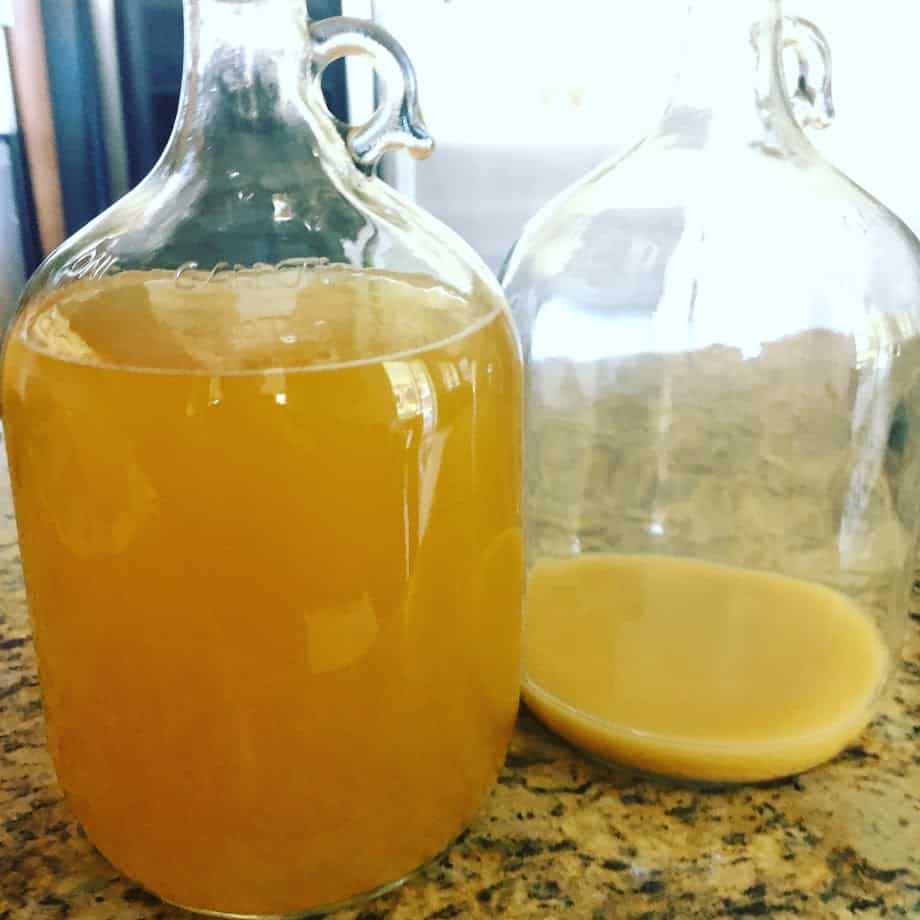
Mead can be super simple or incredibly complex. It all depends on what ingredients you use. The hallmark of an excellent high quality mead is to have it as clear as possible. This can become a problem for many reasons, most commonly from various adjuncts, or additions besides honey water and yeast.
Mead is cloudy because of particles suspended in the mead. These can be either proteins, yeast, etc. Mead will clear out on its own given enough time, but there are ways to speed up the process. Healthy yeast, racking, clarifying, fining and filtering are all methods used to clear mead faster.
Time is the best ally in making a good mead and often any of the above methods should not be used until you have given your mead enough time to finish. Mead takes a long time to ferment and if you use any of the above methods too quickly it may result in a less than ideal mead.
How to Clear Your Mead Fast!
Since cloudiness in mead is a result of suspended yeast or other particles you first need to take a look at your recipe. If you decided to use fruit in the recipe its going to be difficult to clear because of the pectin. A fix for this would be to use pectic enzyme.
Pectic enzyme is best to add at the start of fermentation as this is when it will work best. However, this is just the start of your journey in making sure you have a clear mead.
Another way to reduce the amount of suspended particles is to add Bentonite. This is a type of clay that is used to help particles like dead yeast clump together and fall to the bottom of the fermentation vessel.
Healthy Yeast for Fast Fermentation and Clear Mead
The health of your yeast is probably the single most important factor when making mead. A healthy yeast can greatly increase the speed at which your mead ferments leading to a clearer mead faster.
Once the mead reaches its limit of sugars there are to consume or if it hits its abv limit it will die off and begin to clear in the mead. There are a few ways to keep your yeast healthy and I believe mead is the toughest homebrew to do this with.
- Degas your mead for healthy yeast. Regularly degassing your mead during the initial fermentation stage will keep your yeast healthy, the mead smelling great and result in a quicker clear mead.
- Make sure to use yeast nutrient. This is important since honey alone has very few nutrients in it to ensure a healthy fermentation. If your not so keen on chemical additions maybe consider bee pollen as a natural substitute.
- Keep yeast at its perfect temperature. While it may be difficult to do if you don’t have a fermentation chamber, it can be beneficial for a yeasts health. Just make sure you check your yeast packet for a range of healthy temperatures it can thrive in.
- Make sure you pitch enough yeast and add oxygen. This is important for a few reasons, oxygen is consumed by the yeast to grow, and if you pitch to little yeast it may have to fight off undesirable microbes. You can learn more about it from the homebrewers association.
These are some of the more important aspects of making sure your mead yeast is healthy, although there are countless others. However, its harder to distinguish theory from practice and how much it actually contributes.
Clarifying Agents to Clear Cloudy Mead
There are many clarifying agents on the market to help clear out your mead. But in order to find out whether or not it will help, you need to understand how it works.
Clarifying agents are able to bond with suspended particles in your mead. By bonding to these particles they become heavier and will flocculate to the bottom. At this point you will be able to rack your mead and leave behind the sediment at the bottom.
When brewing beer typically Irish moss is added to the boil in order to pull out the protiens and drag them to the bottom. However, mead is a bit different as it is added before bottling after sufficient time has taken place.
Some of the fining agents typically used in mead are:
Of these three I’ve heard sparkoloid used frequently although bentonnite is often used in conjunction with sparkoloid as they target different things.
Bentonnite says it needs to be added before primary fermentation but sparkoloid can be added after and can help to clear up any bentonnite left in suspension. This is likely why sparkoloid is more popular since you can give the mead enough time to clear and then hit it with sparkoloid if its not clear enough for you.

Racking and Filtering
The process of racking and filtering is fairly simple and pretty common with meadmaking. Its essentially transferring the mead from one vessel to another often filtering through a muslin bag. During the process you leave behind sediment and trub clearing out the mead.
There are a few issues when racking and filtering that can cause issues if you are not careful and that is why late racking is often not ideal.
- Oxygenation issues start to become a problem for (non-traditional meads) if you rack multiple times especially after it has been fermenting for a long time.
- You will lose volume each time you rack. This is bad for a few reasons, one: It will leave more headspace and greater oxygen exposure and two: you will have less mead to drink at the end of your fermentation.
In order to rack and filter your mead properly you will need to make sure that you have a closed system and the mead is not dropping from excessive height into the new vessel as it could pick up too much oxygen along the way.
In the video below I demonstrate how I bottle mead which is often done in the same way as racking a mead.
Time is the Ally of a Meadmaker
I know, not really what you wanted to hear, especially since your trying to increase your turnover of mead so that you can make that sweet cash. Or if you are just a homebrewer like many of us are, you want to gift it out to relatives and get ready for your next project.
Whatever your rush, its important to plan out your mead before you begin. This means choosing the right yeast strain for the job. Choosing lower tolerant yeast strains that can produce a lower ABV that will result in a faster mead.
On the flip side adding more honey to a recipe using any yeast strain will make the process take much longer. This is because it takes yeast a while to eat up all the sugars found in honey. But there really is no quality substitute for time when it comes to mead.
Cold Crashing Mead
Cold crashing mead is one last great way to make sure any yeast still in suspension drops out. While at this point your mead should have fermented completely dry and the yeast will drop out on its own. Sometimes stubborn yeasts just keep on floating.
This is partly because of yeast flocculation, since not all yeast flocculates as highly as others, depending on your yeast this could be the problem. So make sure you check to see how high of a flocculator your yeast is. A couple days should be enough time for your yeast to drop out when you are cold crashing.
Remember cold crashing will not kill the yeast, only put it into a dormant state. So don’t bottle it if there is still sugar to be consumed. This could result in a bottle bomb. In order to kill the yeast many people rack onto potassium sorbate or campden tablets.

Final Thoughts on Clear Mead
While clear mead often signifies a high quality finished product it doesn’t have to be super clear to be delicious and consumable. Often times with mead it tastes the best when it has been aged a very long a side affect of this is the mead being super clear.
But, if you just want a delicious drinking mead that’s the world class clarity in mead can get to a point where its good enough and will still taste excellent. Plus the more chemicals and changes you are making to the mead the higher chance something can either go wrong or produce an off flavor.
Its best to just focus on the simple processes and not get too crazy chasing after a clear mead before you are absolutely sure what you are doing. Mead takes far to long to ruin, by trying to clear it up ever further.
